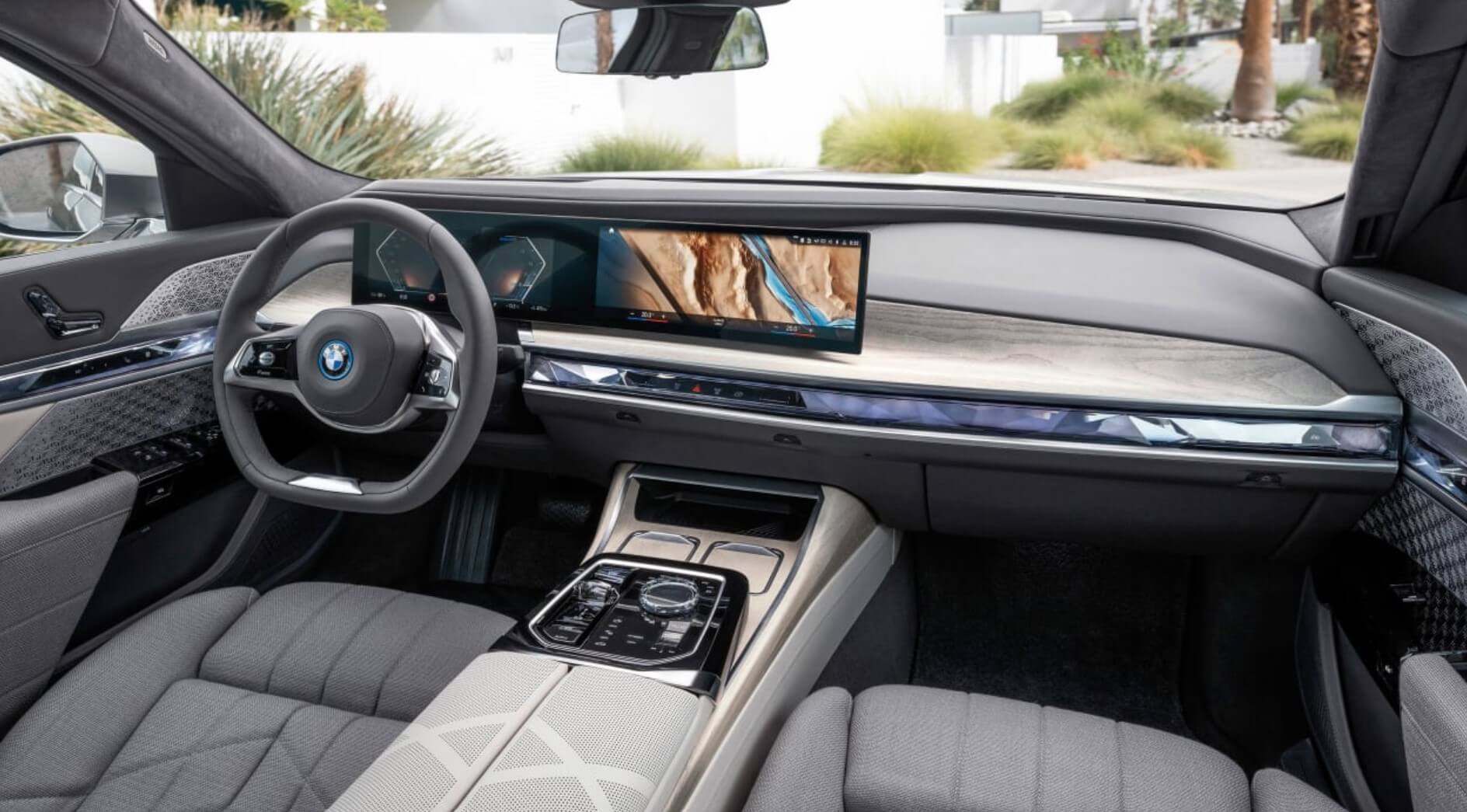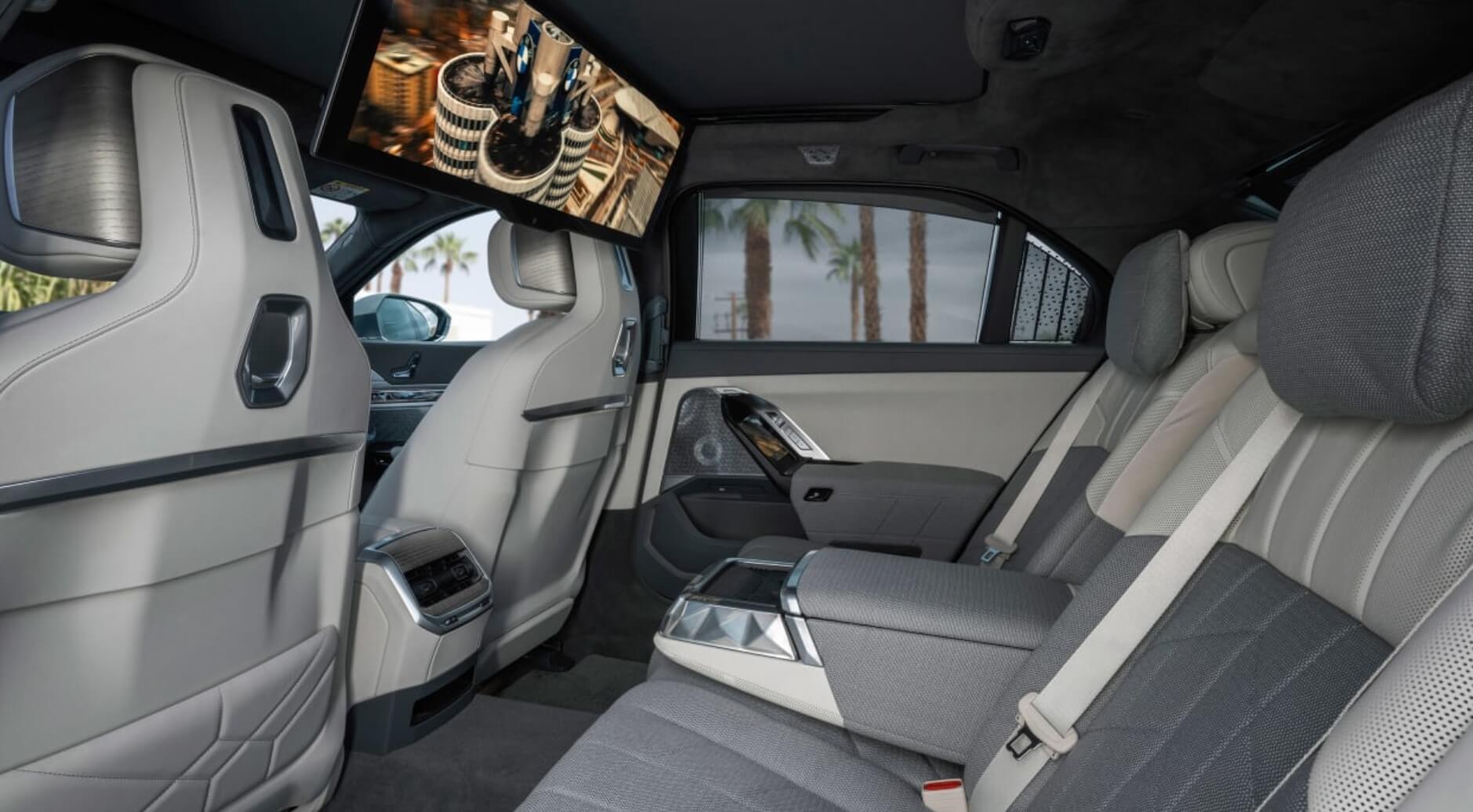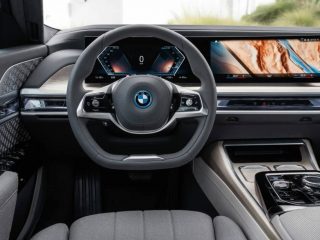Munich’s new flagship arrives as technology-laden electric luxury sedan to rival the Mercedes-Benz EQS. Our first drive ahead of Australian deliveries reveals BMW’s latest EV brings a stroke of genius.
As we transition from petrol to electric, manufacturers are forging their own paths when it comes to construction, body shapes and styling. Some create bespoke EVs with unique architecture, while others adapt ICE cars to house bulky modern-age battery and motor technology.
BMW thinks it has one solution to suit everyone: first pick your model, then your powertrain. In the case of the new 7 Series, that means each customer gets what is ostensibly the same 5.4 metre-long body, but with a choice of petrol, diesel, plug-in or fully-electric powertrains.
This approach is markedly different from BMW’s German rivals. Mercedes offers its conventional S-Class with all the usual engine options, but you’ll need to jump to the EQS if you want pure-electric drive. The advantage – or indeed, the compromise – comes with that car’s streamlined shape.
You see, by focusing its efforts on what luxury limousines like the 7 Series and S-Class do best, BMW has refused to cut corners when it comes to comfort. By keeping that familiar sedan shape, the new 7 Series offers imperious rear-seat practicality – petrol, electric or otherwise.
Technology is placed front and centre in the new 7, even before you get in. Every car we tried had the optional automatic doors fitted, which can open and close themselves at the touch of a button. They’ve countless sensors to prevent them opening into oncoming hazards or other obstacles, but the downside is they rarely operate on the first attempt. To open the driver’s door, for example, you need to be standing rearwards of the B-pillar; you’d get used to it, we’re sure, but even after 36 hours it still didn’t feel all that intuitive to operate.
Inside, you’re greeted by BMW’s latest single-piece curved screen, running the latest iDrive 8 software. The dashboard is clean in its design and the materials used are first rate. The centre console has a minimalist feel; there is no bulky gear selector or handbrake to contend with, but thankfully BMW has opted to retain the intuitive clickwheel. This makes the infotainment system much easier to operate – no bad thing given the myriad sub-menus and features hidden within.
Jump in the back and you’ll immediately notice that the tall roofline means headroom is plentiful, while the 3215mm-long wheelbase (5mm longer than the EQS’s) and super-thin battery (just 110mm deep) ensures there’s loads of legroom, too. The BMW loses points for its chunky transmission tunnel – a hangover from its hybrid platform architecture – but the huge footwells mean this is unlikely to be cause for concern.
That hi-tech front-seat experience is elevated to another level in the back. Nestled in the automatic doors are a pair of touchscreen remote controls that can be used to operate everything from the window blinds to the climate control, the music or media input. They also allow control of the 31-inch Theatre Screen.
This display is an option that folds electrically from the roof of the new 7 Series, granting rear-seat occupants access to things like Netflix, Amazon and YouTube on the move. It’s certainly slick, and with 8K resolution, the graphics and visuals look fantastic. The Bowers & Wilkins stereo has ‘exciters’ in the seats, which vibrate to add cinema-like sensation to whatever you choose to stream.
And yet despite the car’s gargantuan wheelbase, it all feels a little close set. Even with the front seats pushed forward, there’s limited scope to position the screen further away. It’s a bit like sitting in the first few rows at the theatre; immersive, but ultimately not that comfortable. Furthermore, if your driver has particularly long legs, the screen won’t fold down at all.
But otherwise, the back of the new 7 Series – and especially the all-but-silent i7 – is extremely plush. The materials are of equal merit in the rear as they are in the front, and if you spec the Rear Comfort Pack you can electrically recline and move the heated and ventilated outer chairs. There’s four-way lumbar support and a massage function, too, and you can also set the passenger seat right forward if you want to properly stretch out.
But as has always been the case, BMW wants the 7 Series to be the luxury car for drivers as well as those who like to be driven – and that extends to the first-ever pure-electric i7, as well. From launch there is just one model available: the i7 xDrive60, boasting 400kW and 745Nm of torque, plus dual motors for all-wheel drive. Australian deliveries begin soon and pricing starts from $297,900 before on-road costs.
As you can imagine, with that kind of power the i7 pulls strongly at any speed – forcing the car to sit back on its rear axle if you plant your right foot from a standstill; this is a heavy car (2.7 tonnes) and on occasion, it’s impossible to disguise that weight.
And yet the car’s new active roll stabilisation makes a decent fist of keeping the 7 Series level during fast cornering. Select the Executive Drive Suspension and the car will “actively adjust the body height on the corresponding side of the vehicle” to reduce lean. It works really well, though we’d argue this is of greater benefit to those in the back than those in the front, removing a level of engagement you might’ve otherwise enjoyed.
Speaking of engagement, BMW has further developed its collaboration with film score composer Hans Zimmer to create a series of sounds for the various drive mode programmes. The i7’s almost spaceship-esque crescendo under acceleration can’t match the 760i’s V8, but it adds a different dimension to what could otherwise be a somewhat desensitised driving experience.
It is impressive how something of this style and stature can blend both superior long-distance refinement with deft, executive car composure. The i7 seems to ride beautifully – both at urban and motorway speeds with the one caveat that we’ll need to try the car on its largest wheels on Australian roads before giving a definitive verdict.
We struggled slightly to determine exactly how many kays the i7 would cover on a charge, with the car’s trip computer swinging from super efficient to quite the opposite in fairly consistent conditions. We’d expect around 4.8km per kWh would be achievable, which given the 101.7kWh battery, translates to a real-world range of just over 480km.
While that’s some way short of BMW’s official estimate of between 590km and 624km (depending on spec and wheel size) given the car’s 195kW maximum charge speed, it shouldn’t leave owners waiting too long to top up. BMW has shied away from the complex 800-volt electrics found on cars like the Porsche Taycan and Audi e-tron GT, favouring the larger peak plateau that the i7 can achieve when rapid charging. A 10-80 per cent charge takes around 34 minutes.
Prices for the i7 start from £$297,900 for the i7 xDrive60, for which you’ll get that big battery and dual-motor powertrain, plus adaptive LED lights, a fixed glass roof, four-zone climate control and all-round air suspension. Parking Assistant and a suite of cameras all run through BMW’s iDrive single-panel infotainment system.
BMW’s decision to align the i7 with the standard 7 Series rather than create a standalone EV as Mercedes did with the EQS, was a stroke of genius. Cars like these are often bought to be chauffeured in, and Merc’s loss is BMW’s gain; the i7 is a fantastic luxury car, with a spacious rear cabin and heaps of cutting-edge tech. We’d leave the Theatre Screen on the options list though – it’s a gimmick few buyers will ever ask for.
Richard Ingram
















